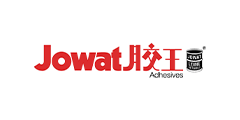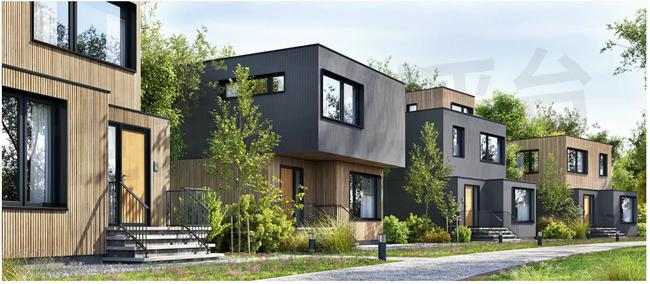Jowat Provides Solutions for Wide Range of Applications in Construction Process, Improving Sustainability of Buildings

The housing of the future must be affordable and energy-efficient, and it still has to be safe—so theory says. How can these requirements be brought to reality? Many different approaches are being used today to make housing more sustainable in every respect.

Now more than ever, housing design is governed by regional, social, and individual change. Prominent trends of today: When searching for a place to live, many people specifically look for a place near a big city. Families are becoming smaller and one- or two-person households are becoming the norm. An increasingly aging population needs a living space tailored to its needs, while people with greater digital affinity have unlocked the comfort of smart-home solutions for them. On top of this, climate change and the weather extremes it brings about present additional challenges for home construction. Buildings must have equal capacities for protection from heat waves in the summer and moisture in the winter, without driving up the costs of cooling and heating. In regions that are particularly threatened by increasingly prevalent extreme weather events such as floods and storms, buildings must also be adequately protected against these influences.
An industry under great pressure
To meet the climate neutrality pledge under the European Green Deal by 2050, Europe will have to make some changes, particularly in the planning and construction of buildings. However, a severe shortage of sustainable construction materials and skilled labor in the world's largest economic area are working directly against that goal. On top of this is the matter of the future energy supply. The Renovation Wave promoted by the European Commission will also be hampered by these hurdles. Jowat product manager Maik Johanntoberens has closely followed the industry for years and is convinced that “future success can only be safeguarded with the development of novel materials and construction methods.”
When it comes to the manufacturing of building elements, Jowat draws on extensive expertise and experience in the field. The Jowapur® 681.xx product family developed by Jowat, for example, is tailored to optimally meet the special requirements in load-bearing timber construction. The one-component adhesive, moisture-reactive adhesive has an optimized ratio between assembly time and pressing time, which considerably reduces the time requirement for processes in this area. In addition, the Jowat portfolio supplies adhesive solutions for the production and lamination of all types of windows, including plastic, wood, aluminum, and composite materials. Depending on the substrate, dispersion adhesives such as Jowacoll® 102.26 or reactive products from the Jowatherm-Reaktant® series can be used.
Wide range of applications
Adhesive even has a place in the production of spacers in insulated windows, thereby making a valuable contribution to improving the energy efficiency of buildings. Other related applications for Jowat adhesives include the production of thermal insulation and acoustic insulation, roof linings, and filter media for ventilation systems. The experts in adhesives are also key partner in the production of laminate flooring, prefabricated parquet, and wood furniture or wood-based furniture. Jowat thereby provides solutions for a wide range of applications in almost all areas of the construction process. In addition, the adhesives must conform to multiple certifications that apply to the different components. These certifications span from energy efficiency to moisture resistance and fire protection. “We are familiar with the requirements that apply to the numerous regulations and certifications, and we always develop our adhesives accordingly,” emphasizes Maik Johanntoberens.
“This generates confidence and is the reason why building element manufacturers trust our bonding solutions.” Maik Johanntoberens also sees great potential for sustainability in construction, for example by maximizing service life and corresponding value preservation of the building. Timber construction also scores points in terms of CO2 reduction in materials, thus giving it another prominent advantage over concrete structures. The vast quantities of construction and demolition waste, constituting up to 55% of waste generation in Germany (Prognos, 2021), present additional recycling opportunities and can be reused within or outside the industry. This is another way in which real estate represents an investment in the future.
- +1 Like
- Add to Favorites
Recommend
- Swiss Laminated Timber Manufacturer Dahinden Extols Reliability and Diversity of Jowat Jowapur® Adhesive Portfolio
- Jowat Presents a New Premium-Class Unfilled PO Hot Melt Adhesive Jowat-Toptherm® 237.50
- Adhesive Expert Jowat Facilitates Kitchen Manufacturer Nolte Küchen‘s Successful Product Changeover to Jowat Adhesive Alternatives
- Jowat‘s Powerful PUR Hot Melt Adhesive Jowatherm-Reaktant® 609.60 Sets New Benchmarks in Flat Lamination
- Sustainable Packaging of Jowat Adhesives
- Jowat Low-temperature Product Adhesive Jowat-Toptherm® 851.99, Suited for Packaging Meal Kits and Ensured Significant Energy Savings
- Jowat Invests in Solar Energy
- Debut of the Jowat Forum
This document is provided by Sekorm Platform for VIP exclusive service. The copyright is owned by Sekorm. Without authorization, any medias, websites or individual are not allowed to reprint. When authorizing the reprint, the link of www.sekorm.com must be indicated.





























































































































































































































































































































































































































































































































































































































































































































































































































































































